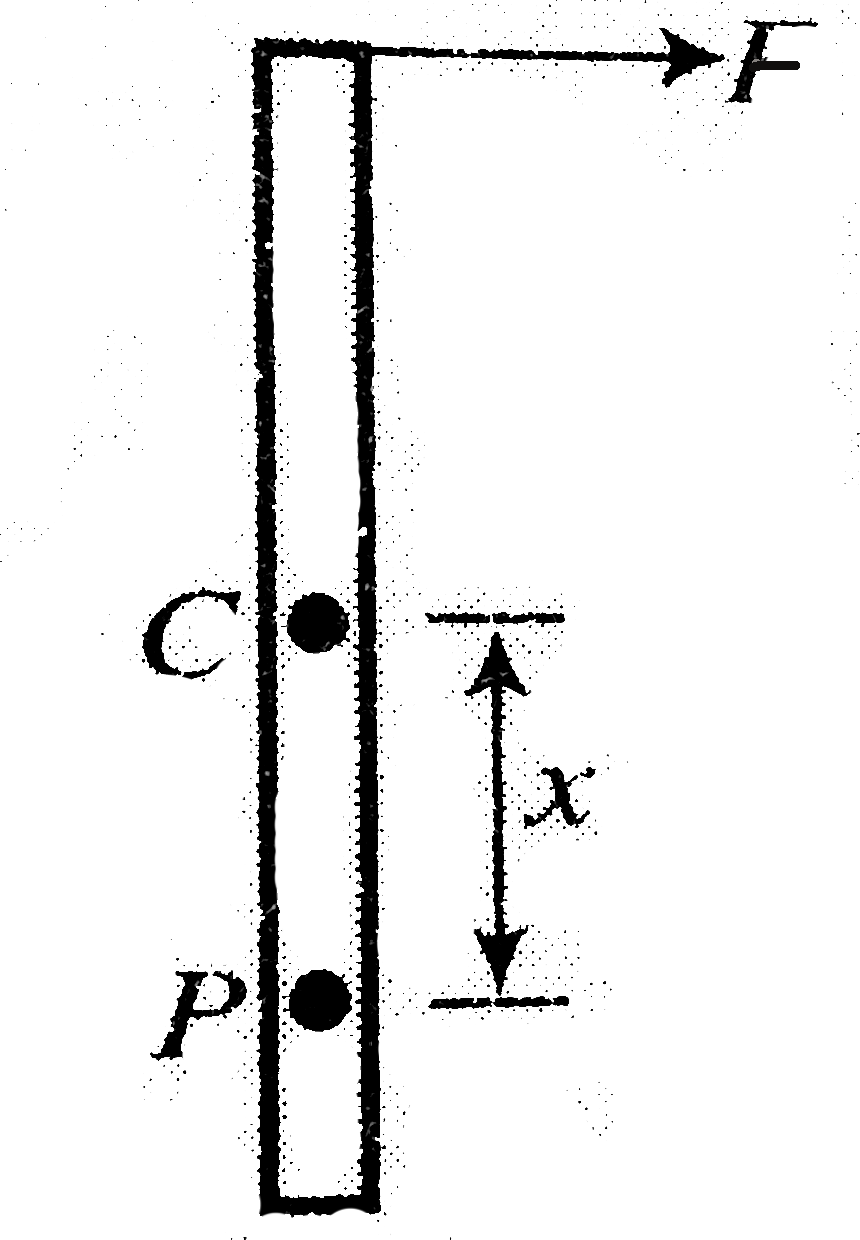Two forces F1 and F2 act on a thin uniform elastic rod placed in space. Force F1 acts at right end of rod and F2 acts exactly at centre of rod as shown (both forces act parallel to length of the rod).

(i)F1 causes extension of rod while F2 causes compression of rod.
(ii) F1 causes extension of rod and F2 also causes extension of rod.
(iii) F1 causes extension of rod while F2 does not change total length of rod.
The correct order of True/False in above statements is
TFF
FTF
FFT
FFF
The force F1 causes extension in rod. F2 causes compression in left of rod and an equal extension in right half of rod. Hence F2 does not effectively change length of the rod.


Topper's Solved these Questions
Similar Questions
When a force F1 acts on a particle, frequency is 6 Hz and when a force F2 acts, frequency is 8 Hz. What is the frequency when both the forces act simultaneously in the same direction?
View SolutionFor what value of x, the point P on the rod of length l=6m has zero acceleration if a force F is applied at the end of rod as shown.

View Solution
Knowledge Check
Two forces F1 and F2 are acting on a rod abc as shown in figure.
 Aif F1=F2 then τa=τb=τc ( for both forces)Bif F1=F2 then τa=τc≠τb ( for both forces)Cif F1≠F2 then τa≠τb≠τc ( for both forces)Dif F1≠F2 then τa=τc≠τb ( for both forces)
Aif F1=F2 then τa=τb=τc ( for both forces)Bif F1=F2 then τa=τc≠τb ( for both forces)Cif F1≠F2 then τa≠τb≠τc ( for both forces)Dif F1≠F2 then τa=τc≠τb ( for both forces)Two forces −→F1and−→F2 are acting at right angles to each other , find their resultant ?
A√F21−F22B√F21+F22C√(F1+F2)DF1+F2A force F1 acts on a particle so as to accelerate it from rest to a velocity v. The force F1 is then replaced by F2 which decelerates it to rest
AF1 must be equal to F2BF1 may be equal to F2CF1 must be unequal to F2Dnone of these
Two forces 50Nand100N are acting on a rod capable of rotating it about O as shown in Fig. What is the net torque acting on the rod ?

View SolutionTwo forces of mangitude F1 and F2 are acting on an object.The magnitude of the net force Fnet on the object will be in the range.
View SolutionA deuteron and an α-particle are placed in an electric field.The forces acting on them are F1 and F2 and their accelerations are a1 and a2 respectively.
(i) F1=F2
(ii) F1≠F2
(iii) a1=a2
(iv) a1≠a2
View SolutionA uniform rod of mass M and length L lies flat on a frictionless horizantal surface. Two forces F and 2F are applied along the length of the rod as shown. The tension in the rod at point P is

View SolutionForces F1andF2 act on a point mass in two mutually perpendicular directions. The resultant force on the point mass will be
View Solution

